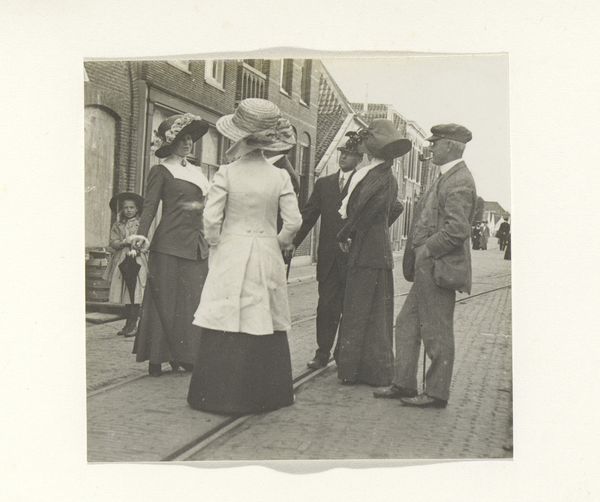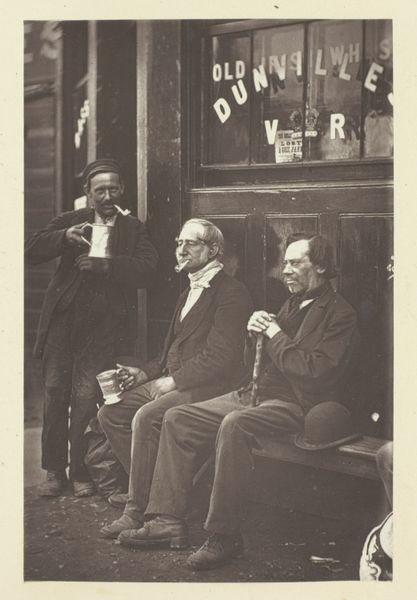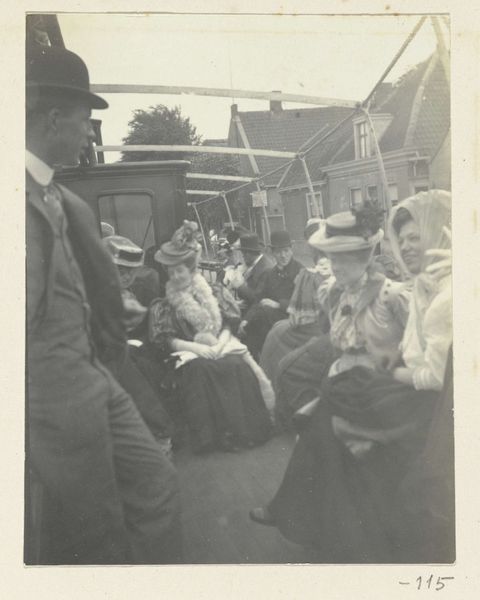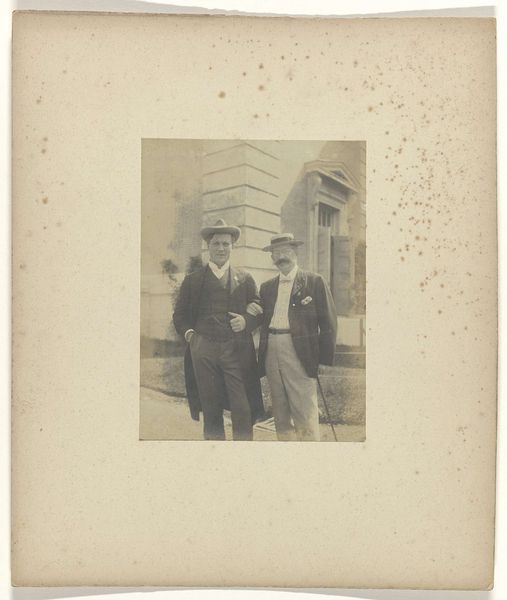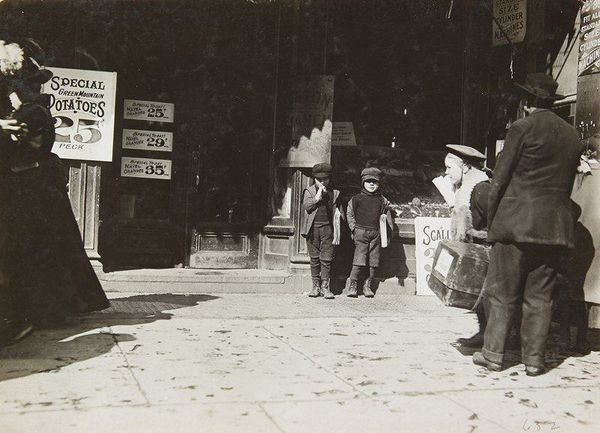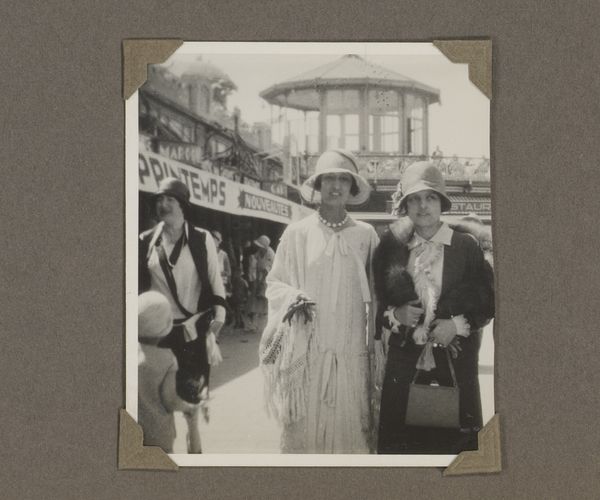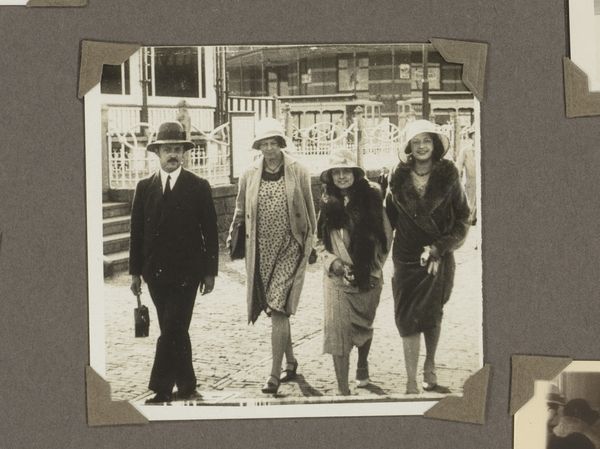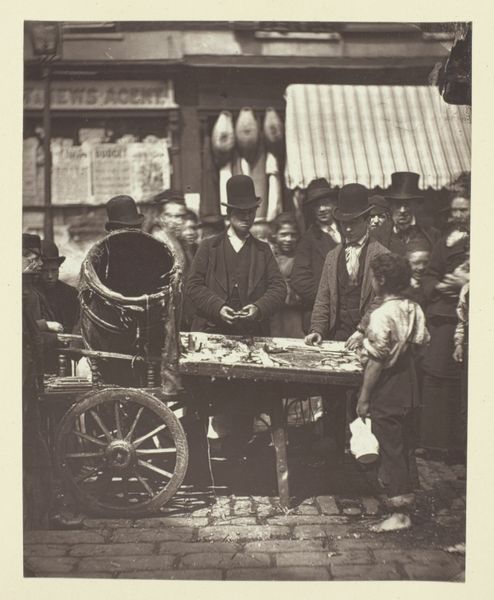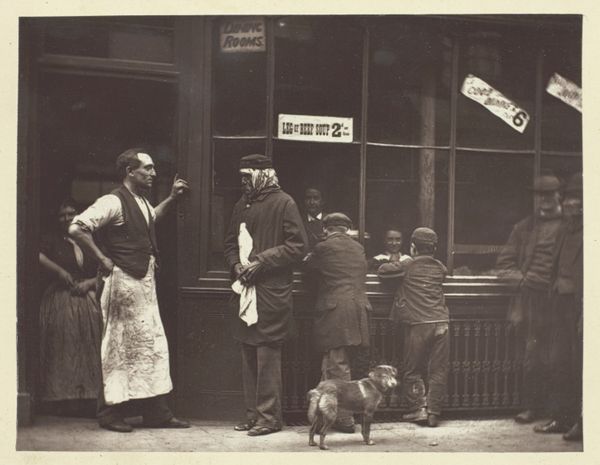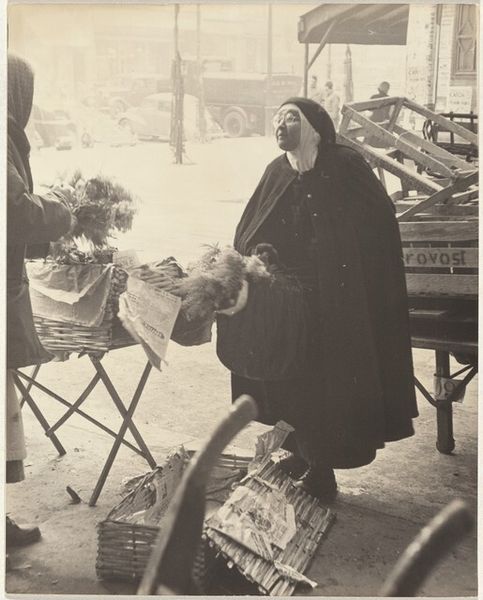
Dimensions: image: 28.4 × 22.3 cm (11 3/16 × 8 3/4 in.) mount: 30.4 × 25.2 cm (11 15/16 × 9 15/16 in.)
Copyright: National Gallery of Art: CC0 1.0
Editor: So, this gelatin-silver print is titled "Blind Man Walking, Paris" and it's from between 1933 and 1938 by Lisette Model. I am immediately struck by the composition and the subject’s expression, a certain lost-in-thought quality, which is almost palpable. What's your read of this work? Curator: You know, what grabs me is Model's courage in capturing such raw humanity. The starkness, the unflinching gaze – or rather, the unseeing gaze. It speaks volumes about the interwar period in Paris. Look at the composition, how the man dominates the frame, almost pressing against us. Do you feel a sense of…discomfort, perhaps? It is as though Model were saying "Here. See him. *Really* see him." Editor: Discomfort is definitely there. Almost as if you're invading his personal space, perhaps amplifying the feeling of his vulnerability? It’s not a flattering image in the traditional sense. Curator: Precisely! It flies in the face of the polished portraits that were common. Instead, Model embraces a kind of brutal honesty. Notice the texture, almost gritty; it enhances the raw quality, don't you think? It really grounds us in the moment. And there's a defiant modernism here too. This is not about idealizing the subject; it's about presenting an unvarnished reality. The realism, or even expressionism, has been masterfully applied in her photography. Editor: I never considered the texture so closely. It really amplifies that gritty realness and sense of immediate, documentary photography. Curator: I’m delighted you agree! Isn't it remarkable how one image can hold so much, and how our interpretations can shift just by altering the lens through which we view it, much like the work of the blind man in the artwork?
Comments
No comments
Be the first to comment and join the conversation on the ultimate creative platform.


